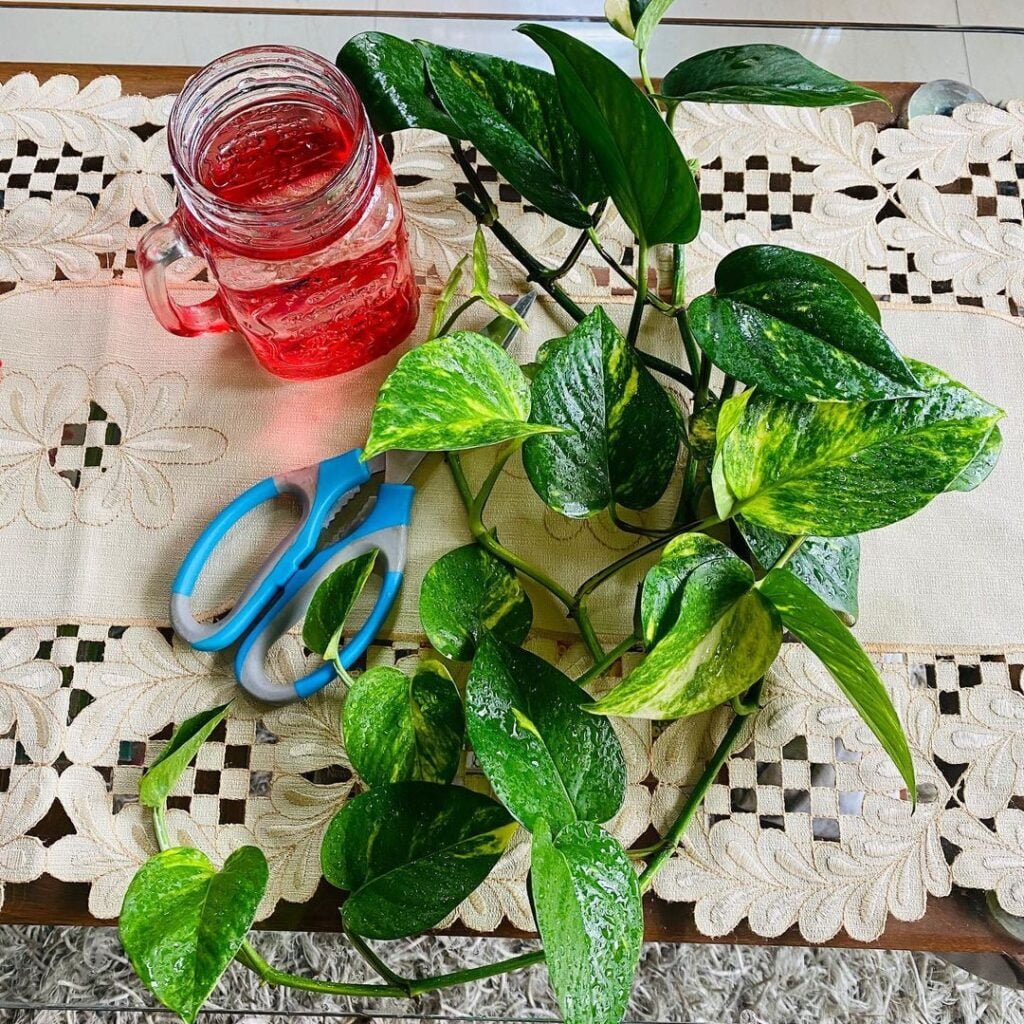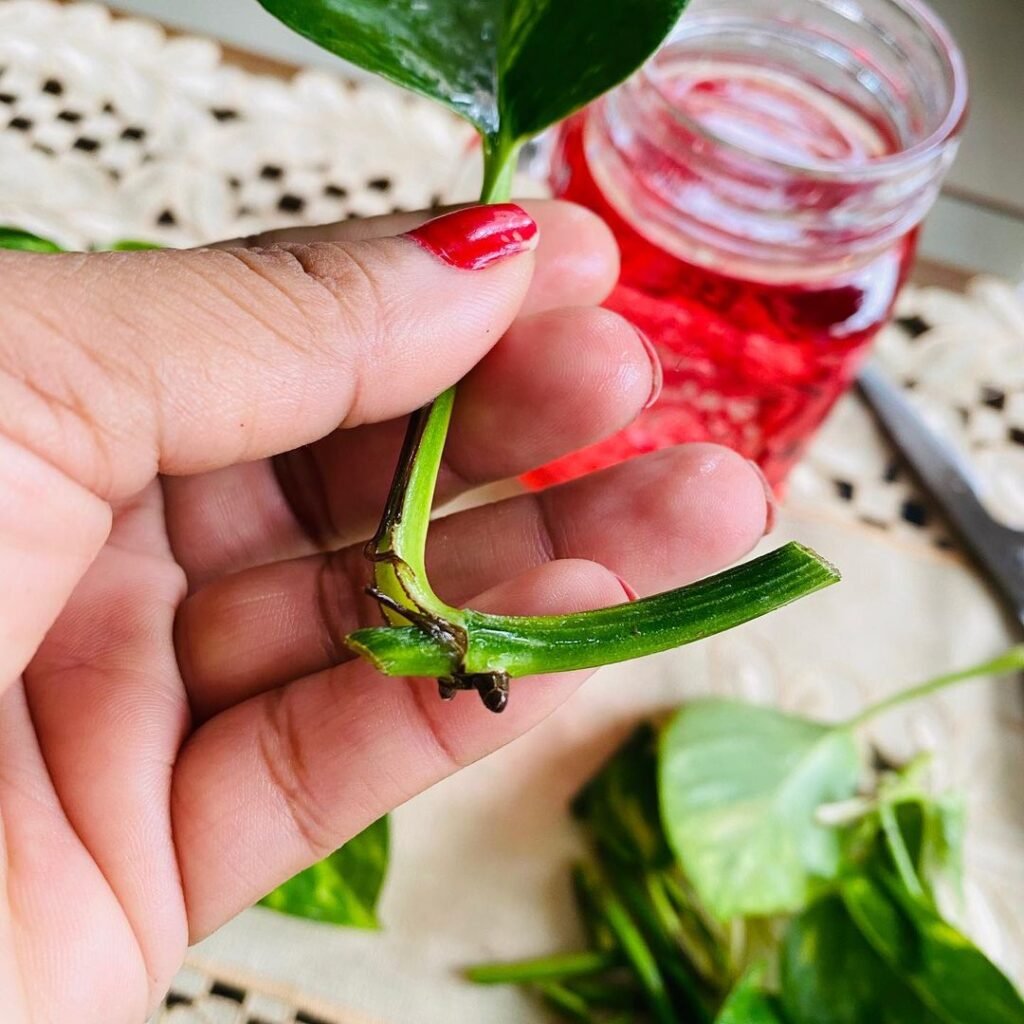Discover the secrets to cultivating a thriving Money Plant (Pachira Aquatica) with this comprehensive guide. Learn about its unique attributes, care requirements, propagation methods, and troubleshooting tips to ensure your plant flourishes and brings prosperity into your home.
The Money Plant, also known as the Pachira aquatica or the Money Tree, is a beloved houseplant that has gained immense popularity for its alleged ability to bring good luck and financial prosperity. Beyond its symbolic meaning, this stunning plant adds a touch of tropical flair to any indoor space with its braided trunk and lush foliage. In this article, we’ll explore the attributes, care requirements, and propagation techniques to help you successfully grow and nurture your very own Money Plant.
Plant Attributes

The Money Plant is a tropical species native to Central and South America, specifically Mexico, Nicaragua, and Belize. It belongs to the Mallow family (Malvaceae) and is characterized by its distinctive braided trunk and glossy, palmate leaves. In its natural habitat, the Money Plant can grow up to 60 feet tall, but as a houseplant, it typically reaches a height of 6 to 8 feet.
Money Plant Care
Light:

The Money Plant thrives in bright, indirect light. Direct sunlight can scorch its leaves, so it’s best to place it near an east or west-facing window or in a well-lit room with filtered sunlight.
Water:

Proper watering is crucial for the health of your Money Plant. The soil should be kept consistently moist, but never waterlogged. Allow the top inch or two of soil to dry out before watering again. During the winter months, when growth slows down, reduce watering slightly.
Temperature and Humidity:

This tropical plant prefers warm temperatures between 65°F and 80°F (18°C to 27°C) and moderate humidity levels. Avoid placing it near drafts or heat sources, which can cause the leaves to dry out.
Soil:

Use a well-draining potting mix formulated for houseplants or a mixture of peat moss, perlite, and compost. Good drainage is essential to prevent root rot.
Fertilizer:

Feed your Money Plant with a balanced, water-soluble fertilizer every two to four weeks during the growing season (spring and summer). Reduce fertilizing in the winter months.
Pruning

Regular pruning is essential for maintaining the Money Plant’s attractive shape and promoting new growth. Here are some tips for pruning:
- Remove any dead, damaged, or discolored leaves or stems.
- Prune back leggy or overgrown branches to encourage bushier growth.
- Use clean, sharp scissors or pruners to make clean cuts.
- Prune in the spring or early summer for best results.
Propagating Money Plants
One of the most exciting aspects of growing a Money Plant is the ability to propagate it and create new plants. There are two methods for propagation: stem cuttings and seeds.
How to Propagate Money Plants from Stem Cuttings

- Take a 6-8 inch cutting from a healthy stem, making sure to include at least one leaf node.
- Remove the lower leaves and dip the cut end in rooting hormone powder (optional).
- Plant the cutting in a well-draining potting mix and water thoroughly.
- Cover the pot with a plastic bag or propagation dome to maintain humidity.
- Place the cutting in a warm, bright location, and water when the soil begins to dry out.
- Once new growth appears and roots have formed (usually within 4-6 weeks), transplant the cutting into a larger pot.
How To Grow Money Plant from Seed

- Collect fresh seeds from a mature Money Plant or purchase them from a reputable source.
- Soak the seeds in water for 24 hours to soften the outer coating.
- Plant the seeds about 1 inch deep in a well-draining potting mix.
- Keep the soil moist but not waterlogged, and place the pot in a warm, bright location.
- Once the seedlings emerge (typically within 2-4 weeks), thin out the weaker ones, leaving the strongest plant.
- Transplant the seedling into a larger pot once it develops its first set of true leaves.
Potting and Repotting

Money Plants prefer to be slightly root-bound, so repotting should be done every 2-3 years or when the plant becomes pot-bound. Here are some tips for repotting:
- Choose a pot 1-2 inches larger than the current one, with drainage holes.
- Use a well-draining potting mix formulated for houseplants.
- Gently remove the plant from its current pot, avoiding damage to the roots.
- Place the plant in the new pot and backfill with fresh potting mix.
- Water thoroughly after repotting and continue regular care.
Overwintering
During the winter months, when growth slows down, it’s important to adjust your care routine for your Money Plant:
- Reduce watering, allowing the soil to dry out slightly between waterings.
- Avoid fertilizing until the spring.
- Provide plenty of bright, indirect light to prevent leggy growth.
- Maintain moderate humidity levels.
Common Pests & Plant Disease

Like most houseplants, the Money Plant can be susceptible to certain pests and diseases. Here are some common issues to watch out for:
- Spider mites: These tiny pests can cause leaf discoloration and webbing. Treat with insecticidal soap or neem oil.
- Mealybugs: These cottony insects can infest the plant and cause stunted growth. Wipe them off with a cotton swab dipped in rubbing alcohol.
- Root rot: Caused by overwatering, this fungal disease can be deadly. Improve drainage and allow the soil to dry out between waterings.
- Leaf spot: Fungal or bacterial infections can cause spots or discoloration on the leaves. Remove affected leaves and improve air circulation.
Common Problems with Money Plant

Even with proper care, you may encounter some issues with your Money Plant. Here are some common problems and their potential solutions:
- Yellowing leaves: This can be caused by overwatering, poor drainage, or lack of nutrients. Adjust your watering schedule and consider repotting or fertilizing.
- Leggy growth: Insufficient light can cause the plant to become leggy or stretched out. Move it to a brighter location or supplement with grow lights.
- Dropping leaves: Sudden temperature changes, drafts, or low humidity can cause leaf drop. Maintain consistent conditions and increase humidity levels.
- No new growth: Lack of nutrients or improper care can stunt growth. Fertilize regularly during the growing season and ensure proper light, water, and temperature conditions.
Growing and caring for a Money Plant can be a rewarding and enjoyable experience. With its unique braided trunk, lush foliage, and alleged ability to bring prosperity, this tropical houseplant is a delightful addition to any indoor space. By following the proper care guidelines, propagation techniques, and troubleshooting tips outlined in this article, you’ll be well-equipped to nurture a thriving Money Plant that not only adds beauty but also brings good fortune into your home. Embrace the joys of indoor gardening and watch your Money Plant flourish.